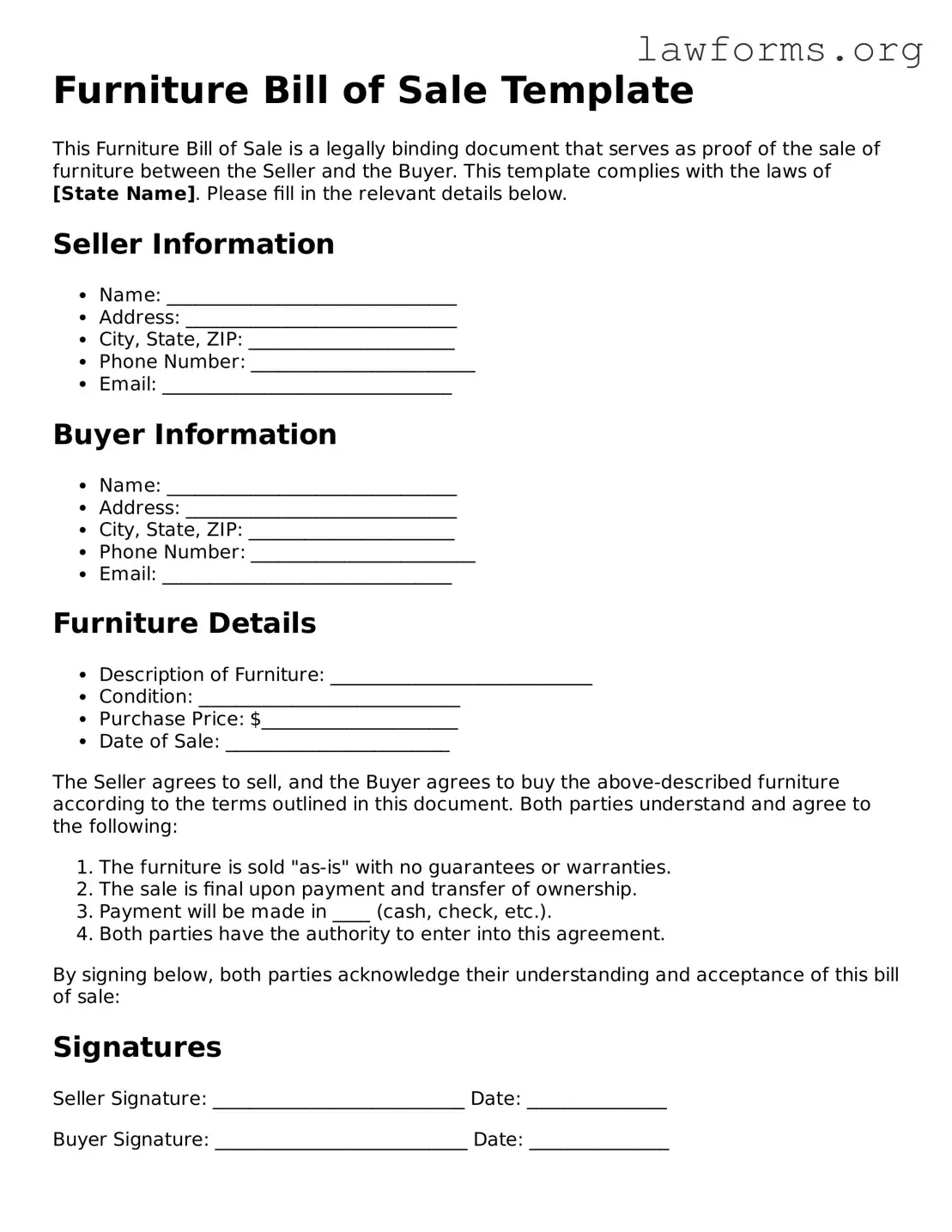Furniture Bill of Sale Template
This Furniture Bill of Sale is a legally binding document that serves as proof of the sale of furniture between the Seller and the Buyer. This template complies with the laws of [State Name]. Please fill in the relevant details below.
Seller Information
- Name: _______________________________
- Address: _____________________________
- City, State, ZIP: ______________________
- Phone Number: ________________________
- Email: _______________________________
Buyer Information
- Name: _______________________________
- Address: _____________________________
- City, State, ZIP: ______________________
- Phone Number: ________________________
- Email: _______________________________
Furniture Details
- Description of Furniture: ____________________________
- Condition: ____________________________
- Purchase Price: $_____________________
- Date of Sale: ________________________
The Seller agrees to sell, and the Buyer agrees to buy the above-described furniture according to the terms outlined in this document. Both parties understand and agree to the following:
- The furniture is sold "as-is" with no guarantees or warranties.
- The sale is final upon payment and transfer of ownership.
- Payment will be made in ____ (cash, check, etc.).
- Both parties have the authority to enter into this agreement.
By signing below, both parties acknowledge their understanding and acceptance of this bill of sale:
Signatures
Seller Signature: ___________________________ Date: _______________
Buyer Signature: ___________________________ Date: _______________
Note: It is recommended that each party retains a copy of this signed document for their records.
